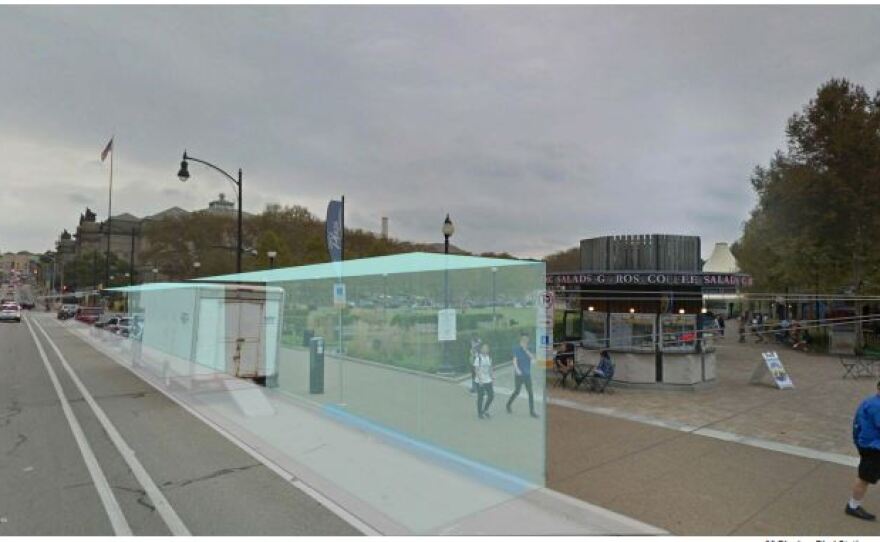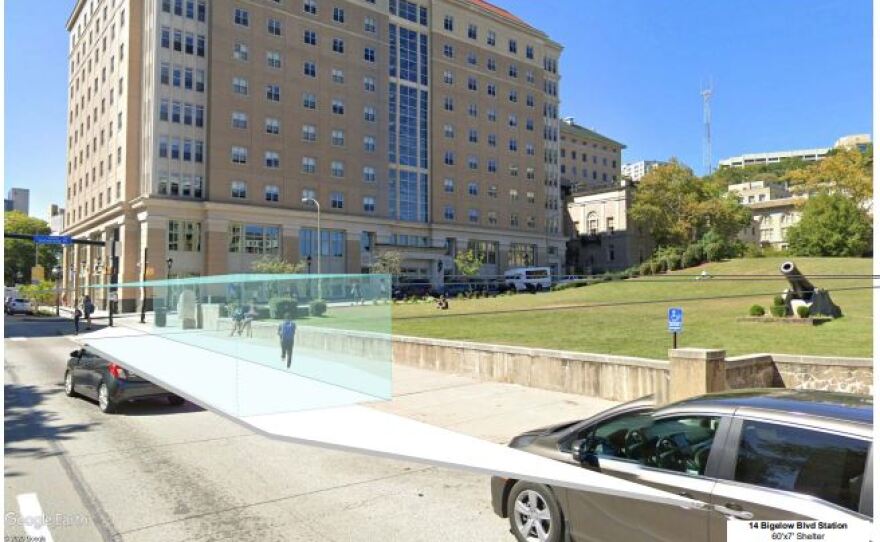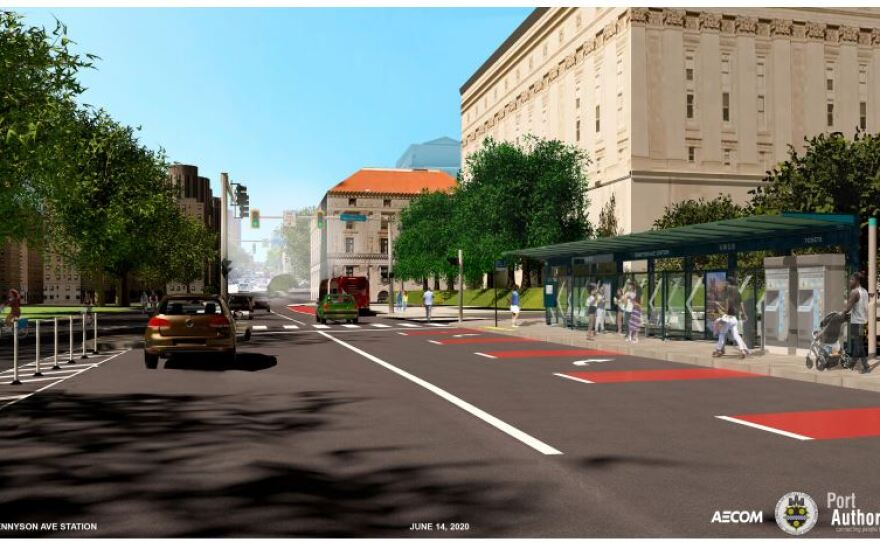Two proposed Oakland bus shelters for the new Bus Rapid Transit system will be downsized after a vote last week by Pittsburgh’s Art Commission.
Critics on the commission argued that the shelters, on Fifth Avenue in front of Soldiers & Sailors Memorial Hall, and on Forbes Avenue along Schenley Plaza, were so big they obscured the views of those two community landmarks.
The shelter in front of Soldiers & Sailors, which Pittsburgh Regional Transit proposed at 60 feet, will now be 30 feet long. Two shelters of 60 feet each were proposed for Schenley Plaza, near The Porch restaurant; only one of them will now be built.
“One-hundred-twenty-foot long shelters are essentially a block to ground-floor activity,” said commissioner Vivian Loftness, a professor of architecture at Carnegie Mellon University, speaking of the latter location.
Commissioners Sarika Goulatia and Richard Parsakian voted with Loftness to shorten the shelters.
Commissioner Peter Quintanilla dissented. He said the shelters should be full-size for the benefit of riders.
“Let’s not shoot our residents who don’t have cars in the foot just because we think it’s going to be blocking a view,” Quintanilla said.
The $291 million Bus Rapid Transit system is designed to ease travel between Downtown, Oakland, and a host of other communities by creating dedicated bus lanes.
At the art commission’s monthly meeting, held Aug. 24 via videoconference, Pittsburgh Regional Transit project manager Denise Ott and Steve Auterman, of the city’s Department of Mobility and Infrastructure, presented plans for 23 bus stops on the route from Downtown through Uptown and into Oakland.
Commissioners approved 21 of the sites, but Loftness and others initially questioned the placement and size of three, including the two it ultimately voted to shorten. The shelters will be 10 feet tall and set back on sidewalks. Ott said PRT had determined the location and scale of the shelters after consultation with property owners and other stakeholders.
Commissioners dropped their opposition to the placement of the shelters after Ott told them that getting agreements and engineering plans for new locations could delay the BRT project by a year or more.
PRT spokesperson Melissa Rubin said the sizes of the shelters “are all based on ridership numbers.” However, she added, “While we believe the ridership does support the larger stations, we are comfortable using the smaller size and we are happy for the approval and to be moving the project forward.”
The BRT has been in planning for years. At the Aug. 24 meeting, Loftness expressed frustration that the art commission was consulted only after the plans for the shelters were nearing finalization. “I wish we weren’t at the tail end of this process,” she said.
Transit officials are awaiting final approval of federal funds for the project, which might come as soon as this fall. Construction of the Downtown portions of the BRT could begin next spring.







